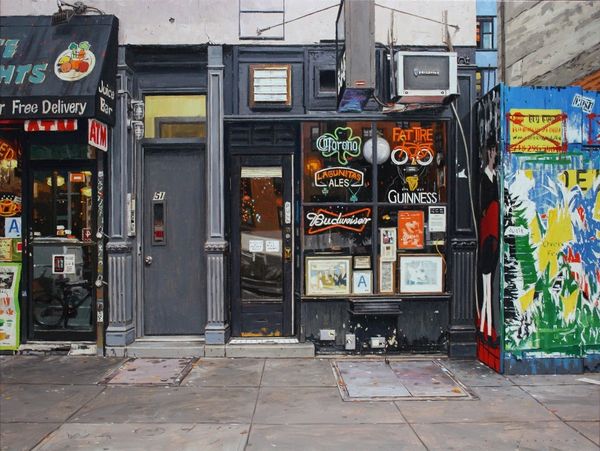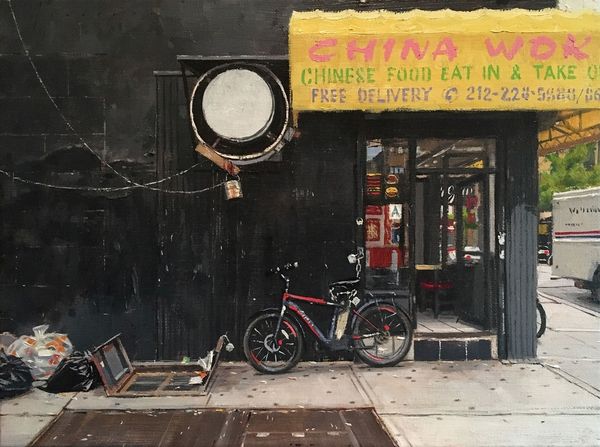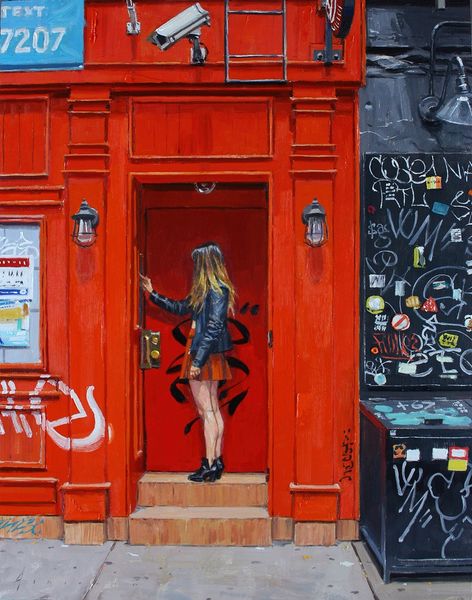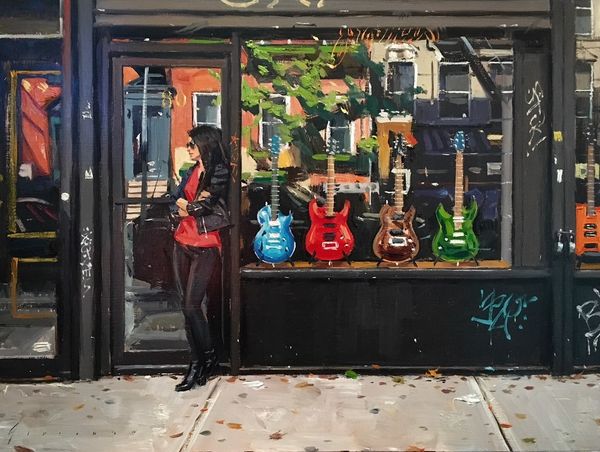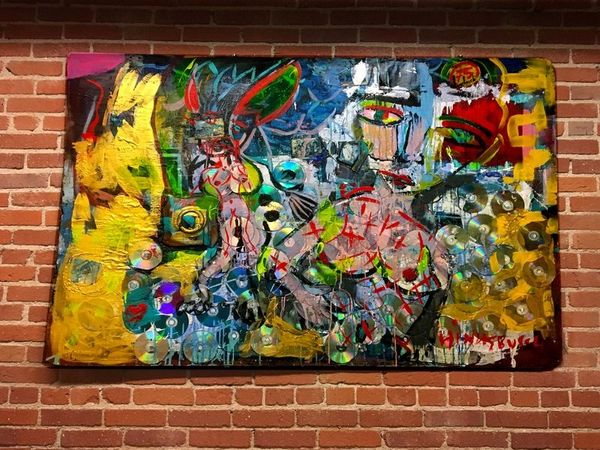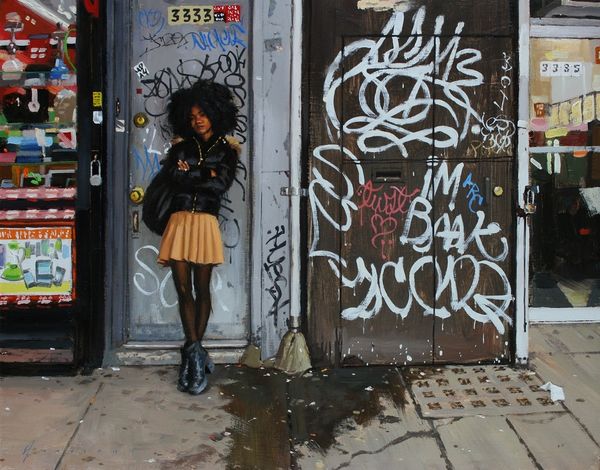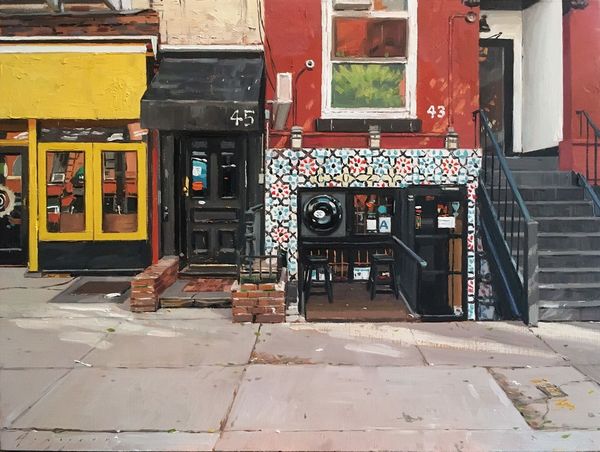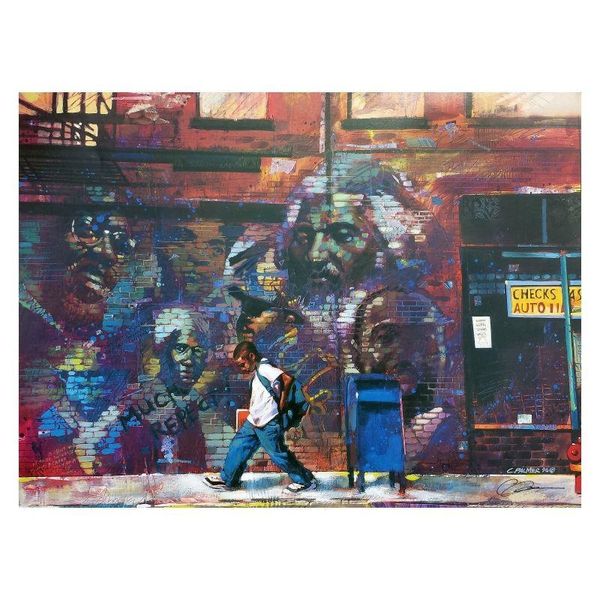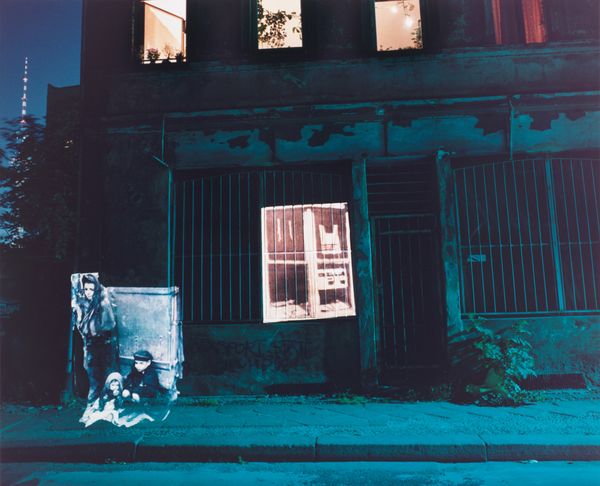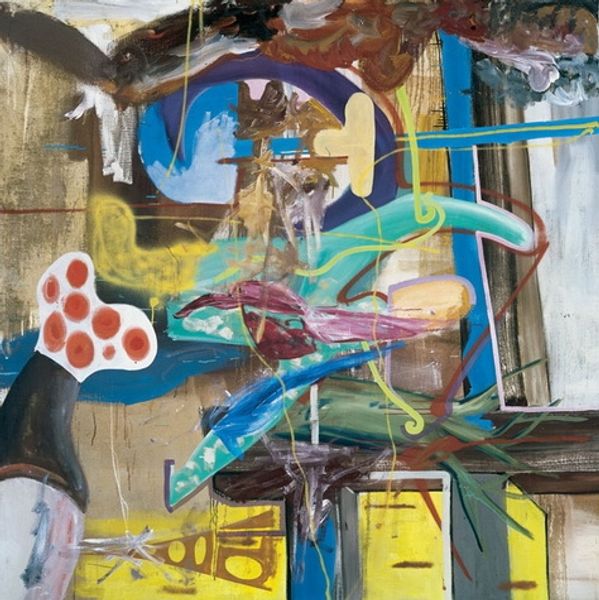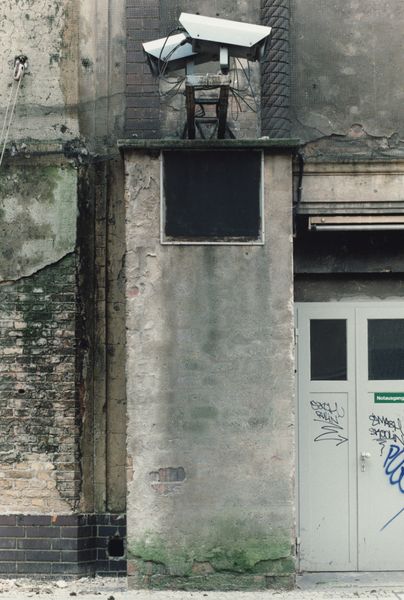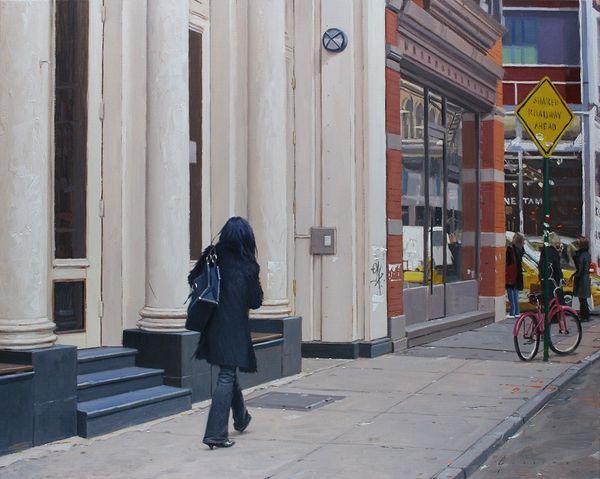
painting, plein-air, acrylic-paint
#
graffiti
#
street-art
#
painting
#
graffiti art
#
postmodernism
#
plein-air
#
street art
#
landscape
#
acrylic-paint
#
urban art
#
pop-art
#
cityscape
#
realism
Copyright: Modern Artists: Artvee
Curator: The first impression is overwhelming – layers upon layers. There's a dense accumulation of images and text; it almost feels like walking through a crowded street in the city. Editor: You’re right, a feast for the eyes. This is Vincent Giarrano's painting, "Basquiat's Studio on Great Jones Place." Giarrano captures the exterior of the building, turning it into a canvas reflecting the spirit of its former inhabitant. Curator: A spirit indeed, judging by the chaos. There is a certain rawness and unfiltered energy that’s reminiscent of Basquiat's own style. The tags and stickers create a palimpsest effect, with each layer telling its own story. Editor: That layering mirrors Basquiat's work in many ways, acting as a cultural record in progress. Giarrano uses that, and by representing this site so realistically, he's immortalizing a crucial aspect of New York’s art history. How do you think the medium, presumably acrylic, assists Giarrano’s concept? Curator: Acrylic lends itself well to this type of urban landscape; its versatility and vibrant colors allow for quick, layered application. You can replicate that immediate, impulsive feel of street art so important to Giarrano's vision, also contributing to the realism with its clean finish. Did this site possess a similar density to Giarrano’s painting, or did he manipulate it towards visual noise? Editor: Great question. Giarrano likely heightened the density. While the actual building undoubtedly bore some graffiti, the painting presents a hyper-real accumulation. He invites reflection on how we create artistic legacy and whether visual intensity amplifies meaning. Curator: It definitely complicates meaning! A single tag might be easily interpretable. The visual cacophony evokes urban experience itself - fragmented, fast-paced, and ever-changing, making it hard to draw any conclusions about either Giarrano or Basquiat’s project. Editor: Agreed, Giarrano seems intent on mirroring complexity. Well, whether celebrating or critiquing this legacy, this is a testament to art's continuous role in cultural dialog. Curator: Precisely! Giarrano opens doors to further examination about symbolism in place, identity and creative output in urban spheres.
Comments
No comments
Be the first to comment and join the conversation on the ultimate creative platform.
